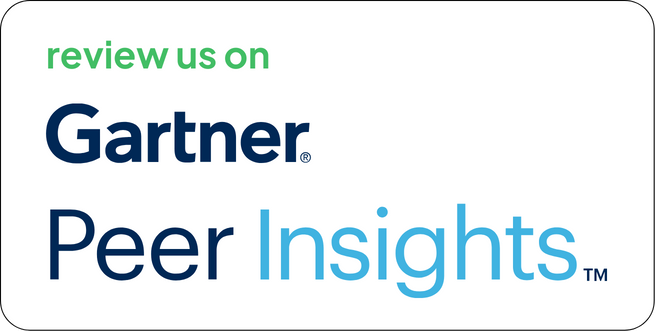Security platforms serve little purpose if user access is mismanaged. Manual authentication systems, especially in large organizations, create loopholes in visibility, audit tracking, and identity governance. That’s why integrating SAML Single Sign-On (SSO) into Strobes plays a critical role in managing centralized, enterprise-grade access across engineering and security teams.
The SAML SSO feature in Strobes allows organizations to authenticate users via their existing identity provider (IdP), such as Azure AD, Okta, or Google Workspace, while controlling access with precision. The goal is clear: eliminate identity sprawl, improve login security, and ensure accountability without increasing friction for authorized users.
This article outlines what the integration does, why it’s needed, and how teams can operationalize it effectively within a continuous threat exposure management (CTEM) setup.
What Is SAML SSO?
SAML (Security Assertion Markup Language) is a protocol used for exchanging authentication data between an identity provider and a service provider. When implemented in Strobes, SAML SSO allows your users to access the platform using their enterprise credentials without requiring separate username/password combinations.
Benefits of SAML SSO:
- Centralized access management through IdP
- Reduced administrative overhead
- Instant revocation of access upon offboarding
- Full traceability of authentication attempts
- Frictionless login for large and distributed teams
However, it’s not just about authentication it’s about maintaining control over who gets in, what they see, and how they’re tracked, especially in regulated or high-risk environments.
What Is Strobes?
Strobes is a CTEM platform that consolidates risk across your attack surface from vulnerabilities and misconfigurations to code-level issues and threat intelligence. It supports key modules like:
- Risk-Based Vulnerability Management (RBVM)
- Attack Surface Management (ASM)
- Application Security Posture Management (ASPM)
- Pentesting-as-a-Service (PTaaS)
Enabling SAML SSO ensures that every user who accesses any of these modules is verified, permissioned, and monitored using your IdP’s security controls.
The Purpose of the Integration
Organizations often struggle with:
- Local user accounts that are hard to manage at scale
- Inconsistent access revocation during employee exits
- Lack of centralized audit logs for platform access
- Repetitive onboarding and manual permission assignment
The SAML SSO integration solves these by connecting Strobes directly with your identity provider. Once linked:
- All authentication is managed via IdP policies
- Roles can be automatically assigned using group mapping
- Strobes becomes a part of your broader identity governance system
What the Integration Actually Does?
Here’s how the SAML SSO integration in Strobes functions, broken into operational steps:
1. Identity Federation and Authentication
Once the integration is enabled, users are redirected to the organization’s IdP when trying to access Strobes. The IdP verifies identity based on its own policies (MFA, IP restrictions, device checks) and returns a SAML assertion containing the authenticated user’s attributes.
Supported attributes include:
- First Name
- Last Name
- Group Membership (for RBAC)
- User Role (optional override via claims)
Strobes then consumes the assertion, maps the user, and starts the session.
2. Role-Based Access via Group Mapping
Access in Strobes is determined either manually or automatically using group membership attributes passed from the IdP.
For example:
| IdP Group Name | Role Assigned in Strobes |
| strobes-admins | Admin |
| strobes-devs | Contributor |
| strobes-auditors | Viewer |
Group mapping is configurable via the Strobes UI under Admin > Authentication > SAML Settings.
3. Session Handling and Logging
Each login is logged in the audit trail, including timestamp, user ID, IdP used, and session duration. Session expiry rules are enforced based on platform-wide security policies, such as idle timeout or hard session expiry.
Login attempts via SAML are read-only at Strobes’ end. All authentication success or failure events originate from the IdP.
4. Optional Lockdown Mode
Once SAML SSO is configured and tested, admins can enable “SSO Enforcement”. This prevents login via email-password for users under specified domains. Accounts that do not belong to allowed email domains are blocked from login via SSO, ensuring strict domain-based enforcement.
Why SAML SSO Integration with Strobes Matters?
Integrating SAML SSO with Strobes is more than a checkbox for compliance. It fundamentally strengthens how identity is managed and monitored within vulnerability and risk operations.
1. Eliminates Credential Management Overhead
Strobes does not store or process user credentials when SAML is used. Authentication remains solely the responsibility of the IdP. Password resets, MFA policies, and login frequency are handled externally, reducing the risk of credential leakage within the platform.
2. Strengthens Auditability
Because SAML logins are fully logged and tied to external authentication events, security teams can trace access logs in alignment with broader SIEM or audit tools. This is especially critical in environments subject to compliance audits under frameworks like ISO 27001, HIPAA, or SOC 2.
3. Supports Zero Trust Models
With SAML SSO, access can be conditional. IdPs like Okta and Azure AD allow policies that consider device posture, geographic location, login time, or user risk levels before granting access. This integrates well with zero trust security models that demand context-aware authentication.
4. Accelerates User Onboarding and Offboarding
Provisioning new users is as simple as adding them to the right IdP group. Deactivating access takes a single click within the IdP. There’s no need to coordinate multiple platforms or wait for manual account deactivation.
5. Scales Seamlessly Across Teams and Business Units
As companies expand across geographies or merge departments, access management becomes complex. With SAML SSO:
- RBAC is enforced centrally
- Shared infrastructure is accessed with correct scoping
- Users only see what they are permitted to
This is critical for security teams that manage multiple internal clients or business units under the same Strobes instance.
What You Gain from SAML SSO Integration with Strobes?
| Challenge | What This Integration Solves |
| Manual account creation and removal | Centralized IdP-based authentication |
| Password fatigue and reset requests | No credential storage in Strobes |
| Delayed access changes on employee exit | Immediate revocation via IdP |
| Lack of audit trails for login activity | Full authentication logging |
| Role confusion and privilege escalation | Group-based role mapping and enforcement |
Who Uses This Integration?
SAML SSO Integration with Strobes is ideal for:
- Enterprises with federated identity systems (Okta, Azure AD)
- Teams operating in regulated sectors requiring access control policies
- Organizations with rotating or contract-based users
- Companies practicing least-privilege access control with regular audits
Final Thoughts
SAML SSO in Strobes is designed for companies that cannot afford inconsistent access control across their security tooling. By centralizing authentication and automating role assignments, the integration brings operational simplicity and governance discipline into one framework.
If your teams juggle manual user onboarding, delayed deactivation, or inconsistent permissions, enabling SAML SSO should be a top priority.





